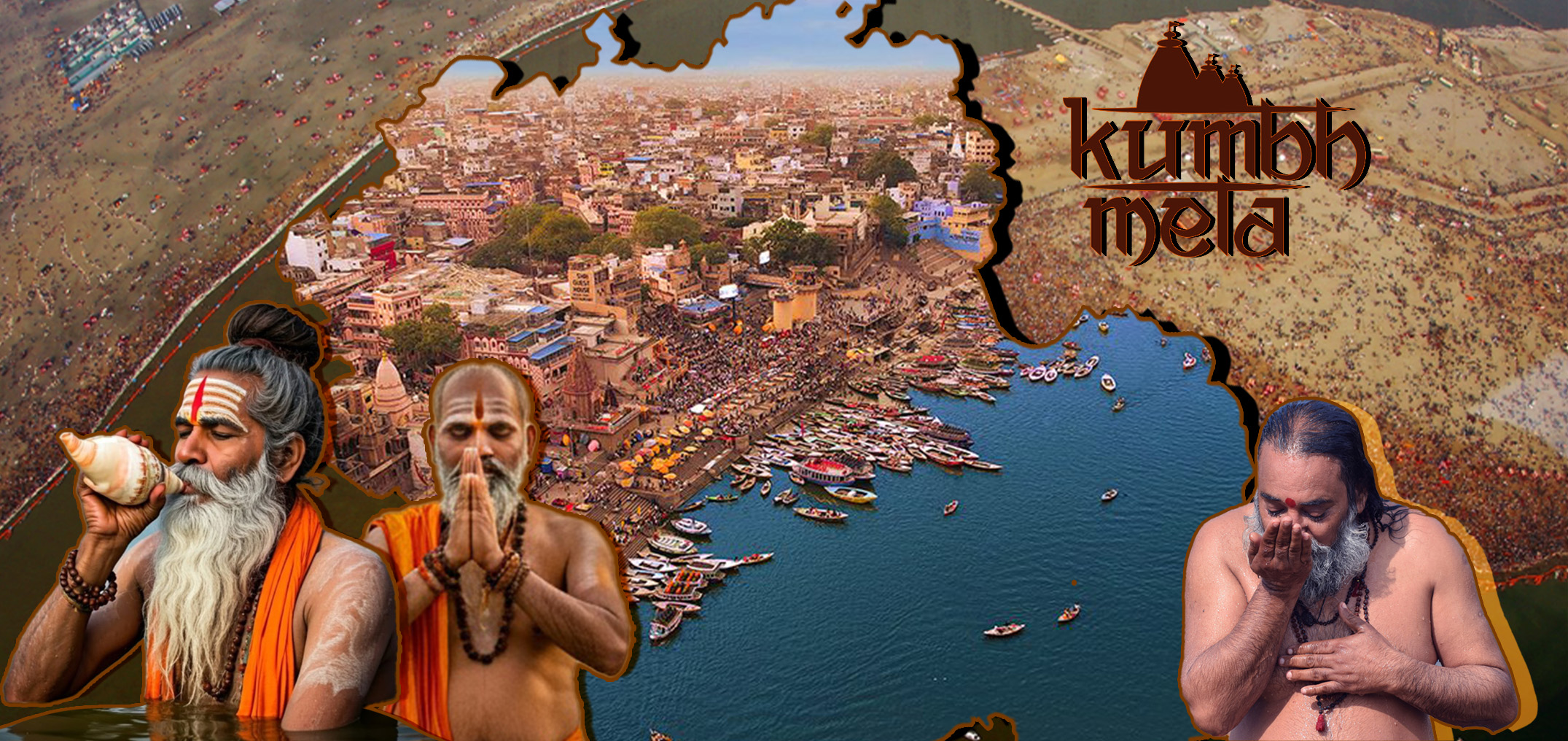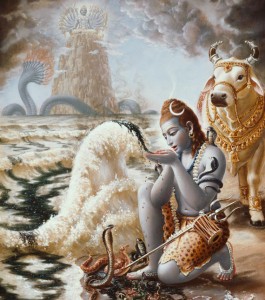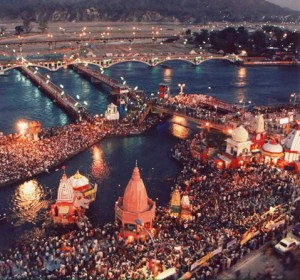Welcome to the 2025 Maha Kumbh Mela, world’s largest congregation of people!
The Prayagraj Kumbh Mela, also known as Allahabad Kumbh Mela, is a mela, or religious gathering, associated with Hinduism and held in the city of Prayagraj, India, at the Triveni Sangam, the confluence of the Ganges, the Yamuna, and the mythical Sarasvati river. At the Triveni Sangam, millions of pilgrims come together to partake in this sacred practice.
,aspect=fit&q=75&width=828)
The Kumbh Mela at Allahabad is held in the month of Magh when Jupiter is in Aries, and Sun and Moon are in Capricorn; or Jupiter is in Taurus, and Sun in Capricorn. However, at times this astrological combination (Kumbh Yoga) does not coincide with the month of Magh. In such a case, the mela is still held in Magh. For example, the 1989. Kumbh Mela should have begun in mid-March according to astrological calculations; however, it started in January.[The Maha Kumbh Mela 2025 will be held in Prayagraj from January 13 to February 26, attracting over 40 crore devotees.
History
According to Hindu mythology, Vishnu dropped drops of amrita (the drink of immortality) at four places, while transporting it in a kumbha (pot). These four places, including Prayagraj, are identified as the present-day sites of the Kumbh Mela. The river-side fair at Prayagraj is centuries old, but its association with the kumbha myth and a 12-year old cycle dates back to the 19th century. The priests of Prayagraj borrowed these concepts from the Haridwar Kumbh Mela and applied it to their local Magh Mela, an annual celebration. The Magh Mela probably dates back to the early centuries CE, and has been mentioned in several Puranas.
The Story of the Kumbh Mela
Mythological significance of Kumbh revolves around the story of the samudra manthan or ocean churning which was done by the gods and demons to obtain the invaluable ratnas or the jewels and amrita or the nectar of immortality. The mountain Mandrachala become churning stick and the Nagraja Vasuki acted as the rope. The Lord Vishnu himself took form of Kasava or tortoise and provided base for the mountain Mandrachala with fear that it may get slipped and submerged in the ocean. The story is symbolic of the churning of our minds to go deeper into our selves from where all powers and auspicious things arise, eventually leading to liberation or immortality.

The first to emerge in this churning was a venomous poison which was consumed by the Lord Shiva who upon drinking this poison came to be called as the Nilkantha. The churning continues and emerged Kamdhenu, the Uccaishrava Jayanta, the son of Lord Indra , catching sight of the amrita kalasa or the pot filled with nectar, snatched it from the the hands of God Dhanvantari. Noticing this, Lord Shukracharya , the Guru of demons alerted and demons chased Jayanta. According to the divine counting one day of Gods is equal to the one year of mortal beings and the Jayanta kept on running for 12 days to avoid amrit kalasha to fall in the hands of demons.
The four places where Jayanta had put down the amrit kalasha in these twelve years were Haridwar, Prayag, Nashik-Trimbakeshwar and Ujjain, and at these four places at that time the sun, moon ,and planets had reached the unique astrological alignment, during which are kumbhmela is held at these places. The nectar pot was saved from the demons by God Brihaspati with the help of Sun , his son Lord Shani and Moon who saved the nectar kumbh from getting damaged.
As mentioned in the Skanda purana, kumbhmela is not just celebrated where the amrit kalasa was put down , but where the nectar had spilled along with putting down of the kalasa. It is believed that these drops gave mystical powers to these places. It is to make oneself gain on those powers that Kumbh Mela has been celebrated in each of the four places since long as one can remember.
The normal Kumbh Mela is held every 3 years, the Ardh (half) Kumbh Mela is held every six years at Haridwar and Allahabad (Prayag) while the Purna (complete) Kumbh mela takes place every twelve years, at four places Prayag (Allahabad), Haridwar, Ujjain, and Nashik, based on planetary movements. The Maha Kumbh Mela is celebrated at Prayag after 144 years (after 12 ‘Purna Kumbh Melas’).
Depending on what position the Sun, Moon, and Jupiter hold in that period in different zodiac signs, the venue for Kumbh Mela is decided.
Significance of Maha Kumbh Mela 2025
The Maha Kumbh Mela, an integral part of Indian tradition, is renowned globally as the largest peaceful congregation of people. The festival is a testament to the human quest for divine and spiritual liberation, representing the belief in freedom from the continuous cycle of birth, death, and rebirth. This gathering allows millions of devotees to immerse themselves in the holy waters of Ganga, Yamuna, and the mystical Saraswati, symbolizing a purification of the soul and, as believed, a path to attaining Moksha or liberation.
Maha Kumbh 2025
The Maha Kumbh Mela is a grand assembly of rituals, with the bathing ceremony reigning supreme as the most significant of them all. At the Triveni Sangam, millions of pilgrims come together to partake in this sacred practice. It is firmly rooted in the belief that by immersing oneself in the holy waters, one can cleanse themselves of all sins, liberate both themselves and their ancestors from the cycle of rebirth, and ultimately attain Moksha, or spiritual liberation.

In addition to the bathing ritual, pilgrims also engage in worship along the banks of the sacred river and actively participate in enlightening discourses led by various sadhus and saints. While it is considered sacred to take a dip in the holy waters throughout the Prayagraj Maha Kumbh, beginning from the auspicious occasion of Paush Purnima, there are specific dates that hold special significance. These dates witness magnificent processions featuring saints, their disciples, and members of various Akharas (religious orders). They partake in the grand ritual known as Shahi Snan, also referred to as ‘Rajyogi Snan’ marking the commencement of the Maha Kumbh Mela. Rajyogi Snan stands as the central highlight of the Kumbh Mela and represents the pinnacle of the celebration.
- Paush Purnima: 13 January 2025
- Makar Sankranti: 14 January 2025
- Mauni Amavasya: 29 January 2025
- Basant Panchami: 03 February 2025
- Maghi Purnima: 12 February 2025
- Maha Shivaratri: 26 February 2025
Maha Kumbh 2025, a sacred pilgrimage and celebration of faith that draws millions of devotees and travelers from all corners of the globe. As you embark on this extraordinary journey, you’ll discover a multitude of attractions that make the Maha Kumbh a truly unique and awe-inspiring event.
UP Government in collaboration with MyGov is hosting the citizen engagement activities to celebrate the grand legacy of Maha Kumbh 2025, a symbol of faith and cultural heritage! Citizens can participate in multiple activities on MyGov!
The Nashik -Trimbakeshwar Kumbh
The last Simhastha Kumbhamela was held at Nashik and Trimbakeshwar in the year 2003-04 . The Kumbh Festival, a human congregation of spirituality is held at Nashik-Trimbakeshwar, Prayag (Allahabad), Haridwar and Ujjain . Ardh Kumbh is held at Prayag and Haridwar after every six years.The Kumbh Fair is held at the banks of sacred rivers every 12 years.
At Nashik – Trimabkeshwar it is held at the banks of river Godavari. At Prayag it is held at sangam, the confluence of the rivers Ganga-Yamuna and the invisible Saraswati, at the banks of Ganga at Haridawar and at the banks of Kshipra at Ujjain. It is marked by the fact that millions of people participate in this great fair without any summons, call, notice or invitation.
Nashik is believed to be the part of Dandakaranya, where Lord Rama lived during his exile. Trimbakeshwar is one of the twelve Jyotirlingas. The sacred river Godavari originates here on Bramhagiri hills. Trimbakeshwar is having Samadhi of shri sant Nivruttinath who is supposed to be founder of Nath Sampradaya.
This Kumbh is unique as Vaishnav Akhadas and Shaiva Akhadas which bath together at Prayag, Haridwar and Ujjain, baths separately here. As a result of arrangements made by the Peshwas due to clashes between ascetics of both sects , Vaishnva Akhadas baths at Nashik and Shaiva or Sanyasis, Udasin Akhadas baths at Trimbakeshwar.


